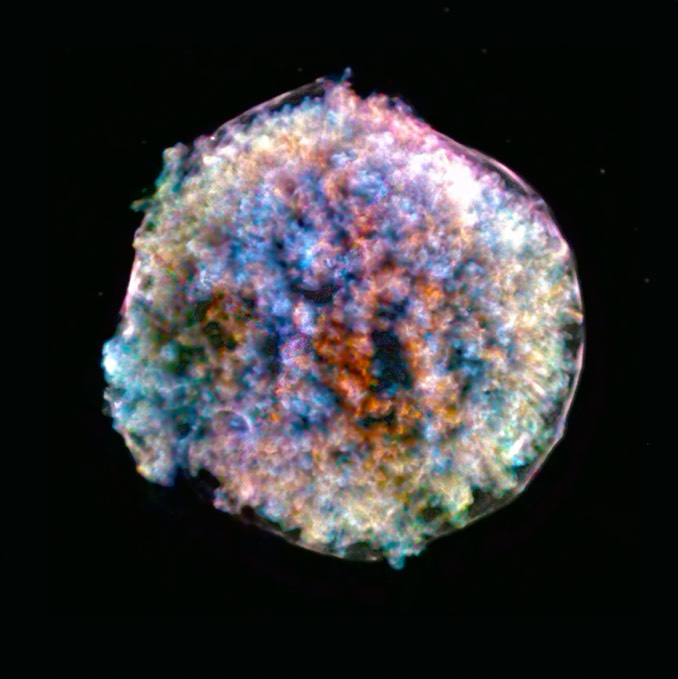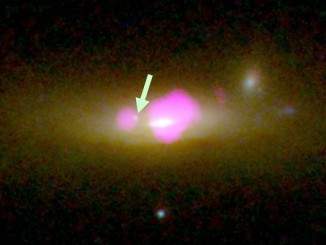The Chandra X-ray Observatory has captured intriguing images of the vast Tycho supernova remnant, first noted in 1572 when the Danish astronomer Tycho Brahe reported a bright “new” star in the constellation Cassiopeia. The new star was actually a Type 1a supernova, the sudden explosion of a white dwarf that had pulled in enough material from a companion to trigger a runaway nuclear detonation, blowing the star’s outer layers into the surrounding space. The result is an expanding cloud of gas that glows brightly in X-rays due to shock waves that heat the material to millions of degrees.

A composite image of the Tycho supernova remnant, showing its “lumpy” nature as revealed by NASA’s Chandra X-ray Observatory. Image: X-ray: NASA/CXC/RIKEN & GSFC/T. Sato et al; Optical: DSS
The Chandra images reveal the Tycho supernova remnant in spectacular detail, showing a pattern of bright clumps and fainter areas. That prompted astronomers to wonder whether the clumpiness was caused by the blast that destroyed the star or whether it evolved later in the remnant’s evolution. Researchers compared the Chandra images, taken in two narrow ranges of X-ray energies to emphasise the clumps and the remnant’s three-dimensional nature, with the projections of two different computer simulations. A statistical analysis indicates the clumps formed in the explosion itself, possibly because the supernova had multiple ignition points.



